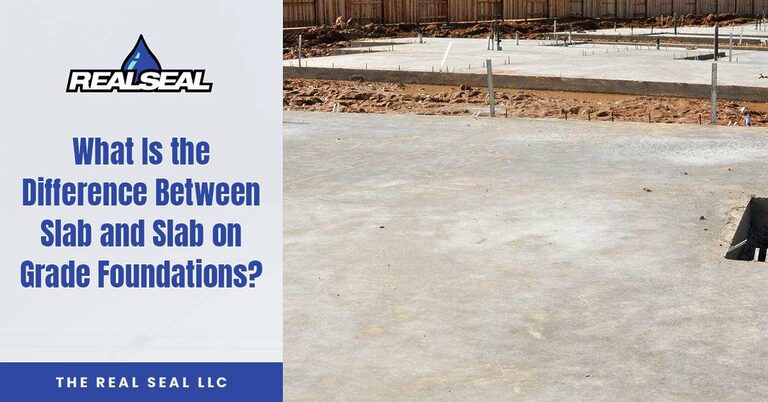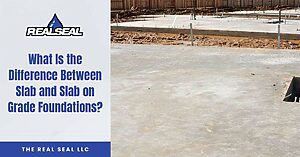Are you considering building a new home or laying the foundation for an addition? If so, you have likely come across the terms “slab” and “slab on grade” foundations. Are they the same thing? Something different?
In this blog post, we will dive into the world of foundations and discuss what a slab foundation is, if there’s a difference between slab and slab-on-grade foundations, and more.
What is a Slab Foundation?
A slab foundation is a type of foundation commonly used in construction. It is a thick, flat concrete slab poured directly on the ground. This type of foundation is often used for residential homes and commercial buildings.
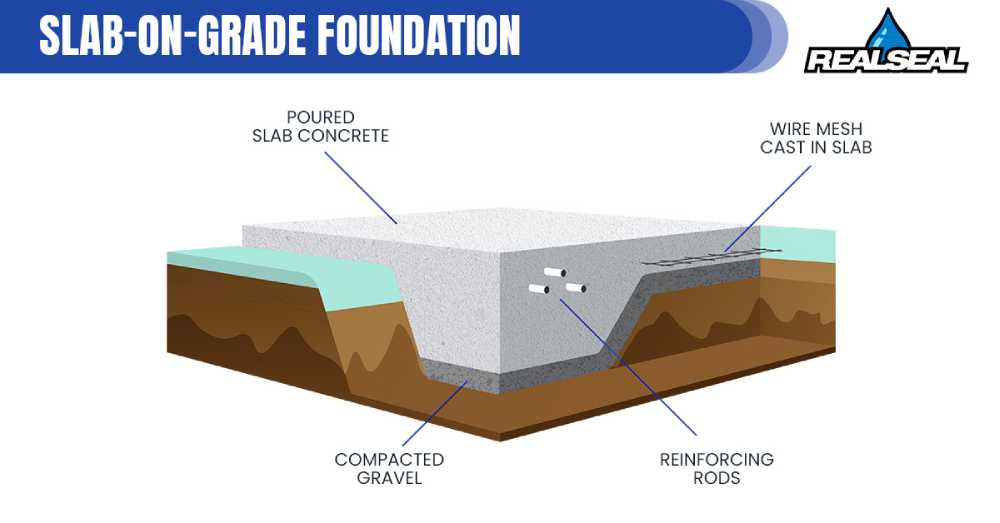
Is a Slab Foundation the Same as a Slab on Grade Foundation?
You may have heard the terms slab foundation and slab on grade foundation being used interchangeably, and that’s because they are the same thing. This type of foundation is commonly used in warmer climates where the ground doesn’t freeze and doesn’t require excavation, like in the case of a basement. As the name suggests, a slab on grade foundation is simply a concrete slab poured directly onto the ground without any basement or crawl space.
So whether you hear someone say slab foundation or slab on grade foundation, they are referring to the same thing. It’s all about context and personal preference for which term to use.
What are the Pros of a Slab Foundation?
- Slab foundations are quick and easy to build, so you can have your home up and running quickly. Unlike basement or crawl space foundations, you won’t have to worry about extra space or excavation, making them more cost-effective.
- The maintenance level with a slab foundation is also low because you won’t have to worry about crawl spaces or basements needing work.
- Slab foundations are generally more energy efficient, which can help save you money on heating and cooling bills in the long run.
Overall, if you want a foundation that’s easy to build, less expensive upfront, and low maintenance, then a slab foundation is a great choice.
What are the Cons of a Slab Foundation?
- One of the biggest downsides to a slab foundation is that it can be a nightmare to access plumbing and wiring for repairs. Since the slab is poured directly onto the ground, any repairs that involve getting to pipes or wires under the foundation will likely require breaking through the concrete.
- Another issue with slab foundations is that they can be vulnerable to flooding. Because they sit so close to the ground, if you live in an area with poor drainage or heavy rainfall, you may find yourself dealing with water damage.
- Slab foundations can be susceptible to cracking. This can happen for several reasons, but one common cause is problematic soil conditions. If the soil underneath the slab is not compact or stable enough, it can shift and settle over time, causing the foundation to crack.
- If you live in an area with many freeze-thaw cycles (i.e., where the temperature fluctuates above and below freezing), the constant expansion and contraction of the soil can stress the foundation and lead to cracking.
What are the Most Common Problems With Slab Foundations?
What is Differential Settlement, and What Causes it?
One of the most frequent issues with slab foundations is differential settlement. This occurs when the foundation settles into the ground unevenly. Differential settlement places a lot of stress on the foundation, leading to cracks in the foundation and potentially even destabilizing the entire structure.
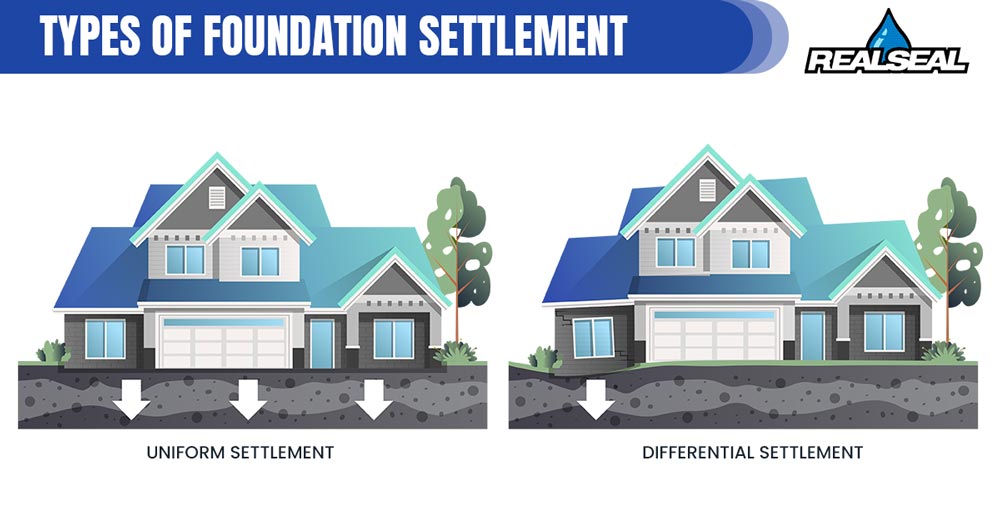
Various things, including poor construction practices, expansive soil, erosion-prone soil, and seismic events, cause differential settlement.
Not all slab foundations will experience differential settlement, and proper construction techniques and maintenance can go a long way in preventing these issues.
The Most Common Signs of Differential Settlement
- Doors and windows that don’t open and close properly.
- Uneven floors.
- Wall, floor, and ceiling cracks.
- A chimney or porch that’s pulling away from the house.
- Torn or wrinkled wallpaper (The wall behind the wallpaper might be cracked.).
- Ceilings and floors that aren’t in contact with the floor.
- Stair step cracks in brick or masonry.
If you notice any of these signs – or anything else suspicious – your best bet is to have a professional come out and take a look. It might end up being nothing, but it’s better to be safe than sorry when it comes to your home’s foundation.
How to Help Prevent Problems With a Slab Foundation
The good news is there are some things you can do to help prevent problems with a slab foundation, or any foundation for that matter. These include the following:
- Regrade your yard – This means sloping your yard away from your home’s foundation to prevent groundwater from draining toward your foundation. Water is one of the biggest culprits for foundation problems, so preventing water from accumulating is critical.
- Install downspout extensions – These extensions direct water away from your foundation before release.
- Clean gutters regularly – Gutters clogged with debris can cause water to overflow, run down the side of your house, and accumulate around your foundation, leading to potential damage.
- Install a drain tile system – If you’re serious about preventing foundation problems, consider installing a drain tile system. A drain tile system is a series of buried drainage pipes installed around your home’s foundation at the footing level to collect water and direct it away from your home.
- Keep trees away from the foundation – Invasive tree roots can grow under and around your foundation and cause damage over time. Keep large trees at least 20 feet away from the foundation.
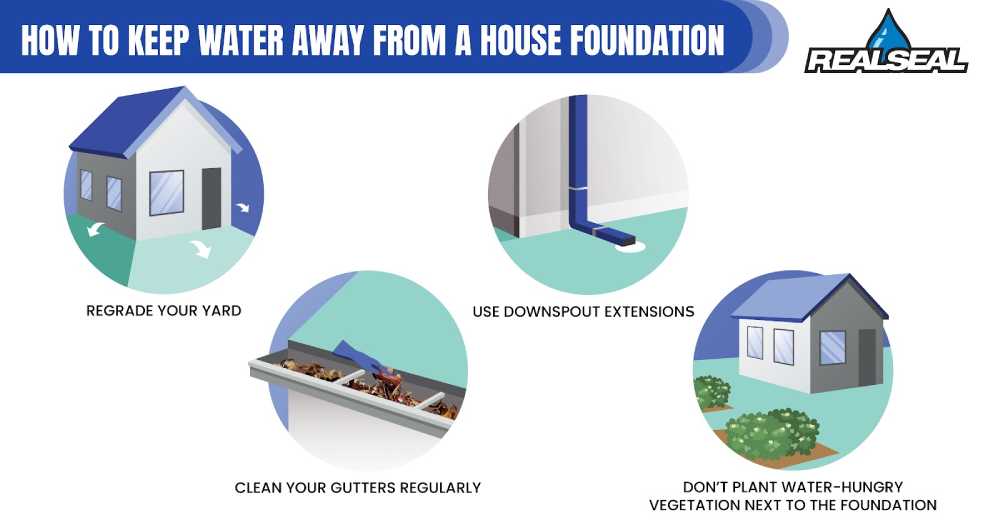
If you think your Chicagoland home’s foundation might have a problem, contact The Real Seal today to schedule a foundation evaluation. If we find a problem, we’ll give you a repair estimate.
